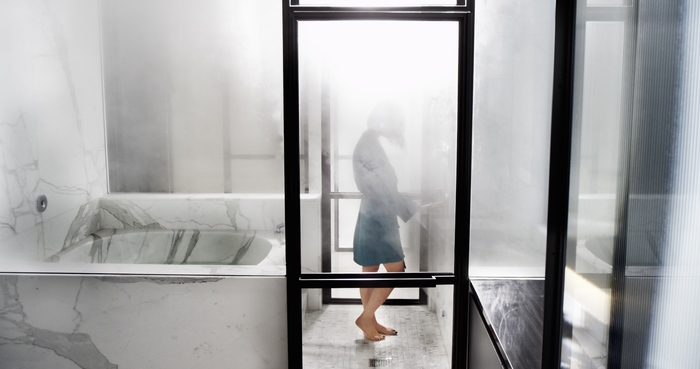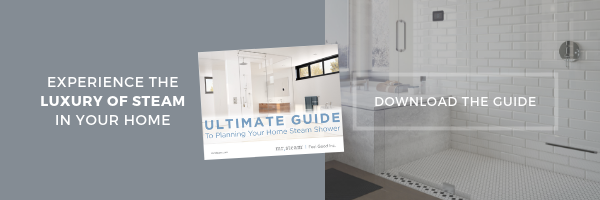Home Upgrades That Will Impact Your Health & Wellness Before and During Retirement
Leggings that can only be pulled up knee-high. Turtleneck sweaters that strangle. Rain ponchos so voluminous, they could protect a convertible. You’ve probably noticed that when it comes to clothing, “one size fits all” … does not. Universal design, on the other hand, creates environments that can be enjoyed by the broadest range of people, in the widest range of situations. From old to young, and with all levels of ability, universal design aims to be there for us all.
Consider a lever-style doorknob. An example of universal design, a lever can be pushed open by someone who is carrying a baby, or hauling grocery bags, or has limited mobility in their hands, making it a design that works for more people than a standard twist-style doorknob.
Universal home design makes our daily lives safer and more comfortable, so, if you’re planning a home remodel, invest in what will work in many ways, whether you are hosting young children, have guests with varying degrees of mobility, or plan to age in place.
And you may very well be aging in place or planning to do so: A 2014 AARP survey found that 88 percent of people aged 65 and older would like to stay in their home as long as possible. Unfortunately, many of today’s homes lack the features that make independent living realistic. For example, 60 percent of homes occupied by older people have stairs. But with universal design as the guiding principle, your home can become a space for all seasons. Let’s look at some options.
Be Our Guest!
Create a Main Floor Bedroom
A first-floor master bedroom—or ideally a suite, featuring with a bathroom in addition to a bedroom—is a savvy and flexible concept. It can serve as a guest room, giving out-of-town visitors valued convenience and privacy. It can work for longer-term, multigenerational living, or provide space for a caregiver.
But having a first-floor guest bedroom is also like having insurance. Because in your 80s, when stairs typically become more challenging, you can move into that bedroom, and still have access to other important rooms such as the kitchen, laundry room and living room.
Where to find this coveted extra room? Consider converting a home office, den or even a large, formal dining room space (an area that’s rarely used by today’s homeowners). Rethinking your home’s floor plan can carve out the square footage for a bedroom, and when the time comes to sell, an extra bedroom may even improve your home’s resale value.
Modify a Garage
Another option: transform a garage into an apartment or guest house. Like the guest bedroom inside the home, this living area creates flexible options. It can be for visitors, or even for a tenant, creating rental income. Later, this bedroom can be enjoyed by an elder who no longer wants to tackle stairs.
The cost for a garage conversion typically ranges from about $6,000 to $20,000, reports Home Advisor, which suggests budgeting for one window, a ceiling, insulation, drywall, flooring, heat and air, and a closet. “If you're adding the master bath, factor in plumbing and a second window,” the article states. “Dreaming of a steam shower or a garden tub? Be prepared to pay an additional $10,000 to $15,000.”
A building contractor can help you navigate the process of obtaining the correct building or conversion permits for a garage conversion, should they be required in your local area. But dotting your I’s is worth it. In fact, Home Advisor reports, that a well-done garage conversion can give you up to an 80-percent ROI.
Luxury and Comfort: Remodeling the Bathroom Right
“The kitchen and bathroom sell a house,” remodeling expert Ken Perrin, of Artistic Renovations in Cleveland, told HGTV. He observed that too many people say, “I want to move, so I have to remodel my bathroom. Then they immediately sell their home.” His point? Remodel a bathroom while there’s plenty of time to live with the pleasurable results, rather than waiting. But when planning your bathroom design, there are a few ways to make it more comfortable and safer, both now and in the future.
Installing a Residential Steam Shower
At least 60 to 70 percent of residential clients are requesting steam showers during a bathroom renovation, architect Robert D. Henry told The New York Times. A proper installation “will help ensure that you get maximum benefit out of the steam shower now, and maximum value when you sell,” the Times says. “As Mr. Henry noted, ‘Souping up your bathroom with spa like fixtures is becoming de rigueur.’”
Many homeowners enjoy the comfort and convenience of a steam shower, and taking regular steam baths may have health benefits for all stages of life: from clearing acne-like symptoms during the teen years, to improving sleep and reducing anxiety in those stress-filled middle ages, to easing symptoms of joint discomfort as we age.
These benefits—and because homes with steam showers have higher resale values—are why so many owners are remodeling their bathrooms with this affordable yet luxurious feature. For more on the soothing benefits of heat therapy, read how steam is a surprising anti-aging secret weapon.
Zero-Entry Shower Thresholds
When installing a steam shower, look for a zero-threshold enclosure, which allows the user to walk in, rather than having to step over anything. As we age, it gets harder to navigate over a lip into the shower, and a no-threshold shower, also called a curbless shower, is also wheelchair-friendly.
Seating Inside the Steam Shower
A bench seat or wall-mounted folding seat creates a space to relax and unwind. It’s safer for people who may need to shower while seated, and a fold-down style helps maintain a larger space inside the shower enclosure. That’s important, because as we age, we tend to need more space overall to maneuver.
Inside the steam shower enclosure, shower grab bars should be placed adjacent to the seating area; install a second vertical bar outside the steam shower near the entrance. The sturdiest way to install grab bars is via screws driven into studs behind the wall, recommends the Americans with Disabilities Act, so ideally, you’ll want to have these applied by a professional—wielding the right kind of drill—before the shower enclosure is even tiled.
The floor of the steam shower and bathroom overall should be slip resistant, so think about a concrete with polyurea coating, or tiles that have been treating with a non-slip application. Limestone and marble are attractive but can become dangerously slippery for a busy toddler or an older adult.
While you’re at it, if you are remodeling the bathroom, go ahead and expand the door frame by a few inches. A wider door frame can accommodate a wheelchair, or someone using a walker, or cane, allowing for a range of mobility options.
For more on universal design in the bathroom, read “Creating a Fabulous and Safe Bathroom for All Ages.”
A Space for All Seasons
If your home renovations include adding grab bars in the shower, installing non-skid floors, and replacing handles on doors or faucets with easy-to-use models, the National Institute on Aging reports you might even be able to get help paying for these changes. “Check with your local Area Agency on Aging, State housing finance agency, welfare department, community development groups, or the Federal Government,” the agency advises.
Want even more ideas on how to enjoy your home now and in the years to come? Read “Remodeling for Retirement? What to Do Now for Safe, Healthy Aging in Place.”

 SEARCH
SEARCH
 FIND A DEALER
FIND A DEALER








